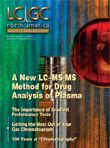Chromatography Market Profile: Extraction Techniques for Environmental Samples
Because most samples are usually unsuitable for direct analysis, extraction is perhaps one of the most important sample preparation techniques for environmental samples.
Because most samples are usually unsuitable for direct analysis, extraction is perhaps one of the most important sample preparation techniques for environmental samples. The most common types of extraction techniques include solid phase extraction (SPE), Soxhlett/liquid–liquid extraction (LLE), and advanced extraction techniques. The method used for a particular application depends on the nature of a sample.

North America Market for Environmental Extraction Techniques
Solid phase extraction is an important method of prechromatographic sample treatment. The versatility of SPE allows it to be used for many different purposes such as purification and concentration of trace elements in a sample, among others. SPE comes in a variety of formats including columns, cartridges, microplates, and pipette tips. LLE and Soxhlet are similar techniques and are used typically for preparing liquid matrices. LLE operates on the basis of mass transfer of a component between two immiscible liquid phases that are brought into contact with each other. In contrast to LLE, Soxhlet extraction methods are used most often when solid samples must be extracted.
While SPE and Soxhlet/LLE represent the majority of the market demand, the use of advanced extraction techniques, including accelerated or pressurized solvent extraction, microwave-assisted extraction, and supercritical fluid extraction, also have become commonplace. These systems provide faster, more efficient extraction than traditional methods. Demand for advanced extraction techniques is fueled by soil and pollution analyses.
In 2005, the North American market for extraction techniques for environmental applications accounted for about $52 million. Although growth in North America is expected to be modest, new EPA regulations and approved methods, especially for advanced extraction techniques, provide a stimulus for continued market expansion.
The foregoing data was extracted from Strategic Directions International, Inc. Market Analysis and Perspectives (MAP) Report. For more information, contact Glenn Cudiamat, vice president of Research Services, Strategic Directions International, Inc., 6242 Westchester Parkway, Suite 100, Los Angeles, CA 90045; tel. (310) 641-4982, fax (310) 641-8851, e-mail: sdi@strategic-directions.com or website: http://www.strategic-directions.com

Evaluating Body Odor Sampling Phases Prior to Analysis
April 23rd 2025Researchers leveraged the advantages of thermodesorption, followed by comprehensive two-dimensional gas chromatography coupled to time-of-flight mass spectrometry (GC×GC/TOF-MS), to compare and assess a variety of sampling phases for body odor.

.png&w=3840&q=75)

.png&w=3840&q=75)



.png&w=3840&q=75)



.png&w=3840&q=75)










